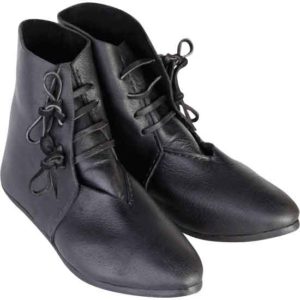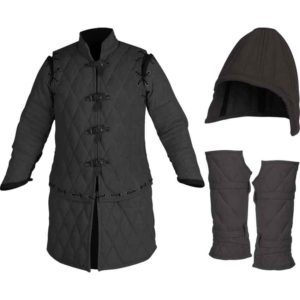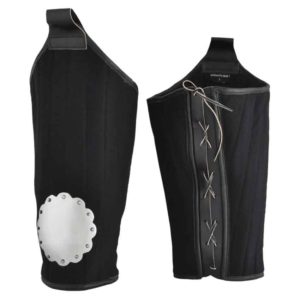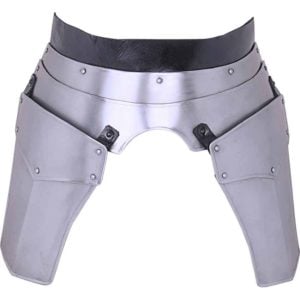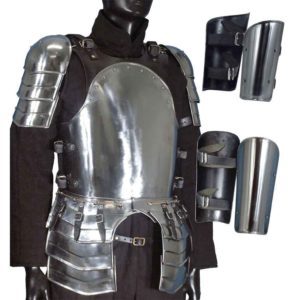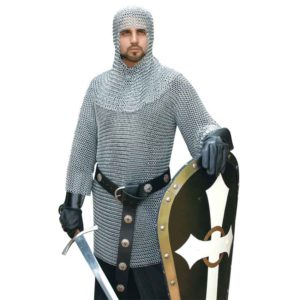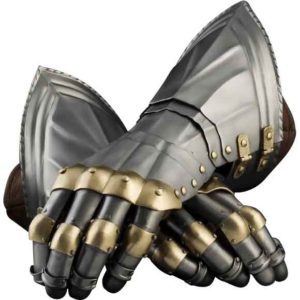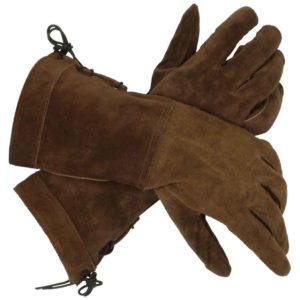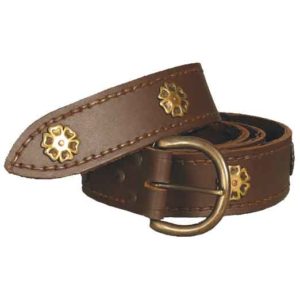How to Layer and Wear your Steel Armor
Medieval Collectibles is here to help you figure out how to layer and wear a suit of steel armor. We walk you through putting together your armored outfit by using the Blackened Vladimir Armour Outfit (OUTFIT-M48) as an example. After reading this post, you will be better prepared to get ready for battle.
Step 1: Clothing
Before you get to putting on that cool-looking cuirass, your medieval outfit starts at the basics: clothing. You should make sure that you have something to wear after you take part in a mighty battle. With the Blackened Vladimir Outfit, you start with the tunic, trousers, and boots.
-
Heinrich Ankle Boots
SKU: MY100515$88.00 Add to Cart This product has multiple variants. The options may be chosen on the product pageRated 4.00 out of 5 -
Gadaric Canvas Tunic
SKU: MY100108$15.95 – $27.00 Add to Cart This product has multiple variants. The options may be chosen on the product pageRated 4.82 out of 5 -
Kasimir Canvas Trousers
SKU: MY100098$22.36 – $40.00 Add to Cart This product has multiple variants. The options may be chosen on the product pageRated 4.67 out of 5
Step 2: Arming Wear
Next, you should put on arming wear. In the case of the Vladimir Outfit, this is the Ecru Medieval Gambeson. Having the right arming wear is crucial to how to layer and wear your steel armor. The main reason behind wearing a gambeson or other pieces of arming wear is that they help to cushion and distribute the weight of any armor being worn. In addition, arming wear helps to prevent rubbing and chafing by reducing the friction between the armor and your skin. Wearing real medieval armor straight on your skin can become uncomfortable very quickly.
Also, when you are wearing arming wear underneath steel armor, it will be your arming wear and not your clothing that will come into contact with the protective oil coating on your armor. Arming wear can include gambesons as well as padded pieces that cover the head, legs, and arms, as well as other places on the body.
Step 3: Chainmail
After putting on your arming wear, you should put on any chainmail that you plan on wearing. In the case of our example outfit, this is the Richard Riveted Blackened Chainmail Coif. The main reason you would put on chainmail is to cover any gaps that occur with your armor. Such gaps in medieval and fantasy knight armor are especially common underneath the arm or near the neck. While chainmail is not very useful against blunt blows like plate armor, it is helpful in preventing stabs and slashes from swords. Also, chainmail and plate armor made from steel will be heavy. Fortunately, both chainmail and battle ready armor will distribute the weight across the body rather than in a small spot.
Step 4: Leg and Thigh Armor
Now that you have on your arming wear and any chainmail, you can put on your plate armor, starting with your leg and thigh armor. In this case, you would put on the Vladimir Greaves and the Vladimir Tasset Belt. Greaves and thigh armor go on first as they require that you bend at the waist to secure any straps. Now that you are working with your medieval knight armor, you may find that having someone help you with putting your armor on may speed up the process.
Step 5: Torso Armor
After you are finished putting on your thigh and leg armor, you can now put on your torso armor. In the case of our example, this is a full cuirass. This cuirass secures at the sides and shoulders with buckles and straps. Once you have placed your torso armor, it may become rather difficult to bend over to do any additional tasks below your waist. This is why your torso armor goes after armor pieces lower down on the body.
Step 6: Pauldrons and Spaulders
Now you have covered your torso against attack. Continue protecting yourself by putting on your shoulder armor. These pieces are called either pauldrons or spaulders. The example pair are the Blackened Vladimir Spaulders. They attach to the cuirass with straps at the shoulders. The cuirass is necessary for the pauldrons to be worn. Thus, the pauldrons have to go on afterwards. This requirement is common with most pauldrons or spaulders.
Step 7: Bracers and Arm Armor
For your next section of medieval plate armor, you can now put on your bracers or other arm armor. The example outfit has bracers. They help to protect your forearms from the enemy. These bracers secure with buckles.
Step 8: Accessories
Once you have put on your medieval knight armor, you can put on your accessories. In our example case, the outfit includes a sword belt, a regular belt, and a belt bag. These go on outside of your armor so that you have easy access. It wouldn’t be easy to open a pouch underneath your cuirass for example. What accessories you wear is up to you but again, keep in mind that you should be able to access them easily after putting on your armor.
Step 9: Gloves and Gauntlets
The last piece of gear that you put on should be your gloves or gauntlets. The Blackened Vladimir Armor Outfit features suede gloves. Regardless of whether your outfit has gloves or gauntlets, they will almost always be your last piece of gear. This is because most other pieces in your outfit require a bit of dexterity to properly secure them. This is especially true of anything that requires tying laces, which some pauldrons or spaulders do for example.
Notes Regarding the Order:
While this order of steps covers the Blackened Vladimir Outfit, the order of putting on your armor can change depending on the pieces of a particular armor set. How to layer and wear your steel armor will vary with what armor you choose. For example, the order of tassets and cuirass may be switched around depending on the design of the tassets. There are some tassets that directly attach to the cuirass rather than hanging from a separate belt. This type of tasset cannot be worn without the cuirass being put on first.
If an armor set includes a gorget, as many do, then it will go on after a cuirass but before the pauldrons. Many of the pauldrons that we offer attach to a gorget rather than the cuirass in a particular armor series. If you are wearing a helmet on top, then you should ensure that you put it on after a gorget or pauldrons but before any arm armor such as bracers.
The main reason is that your arm armor may limit your mobility, and therefore your ability to put on other pieces of armor. The level of dexterity you have with your armor will depend on the armor pieces and the style that you are going for. You may choose to have more armor for greater protection or to fit your desired look. It is also possible that you may choose less armor in order to have greater dexterity.
This article walks through how to layer and wear your steel armor. We hope that it helps you put on your armor in preparation for your next battle or reenactment. There are many pieces of medieval armor for sale on Medieval Collectibles. You can choose pieces for reenactments as well as pieces of LARP armor. If you are looking for SCA armor, we have many pieces of armor for you to choose from, but you should check with your local organization. If you wish to learn how to maintain your steel armor, you can check out an article about it here. Enjoy your steel armor by properly putting it together into a mighty ensemble.


